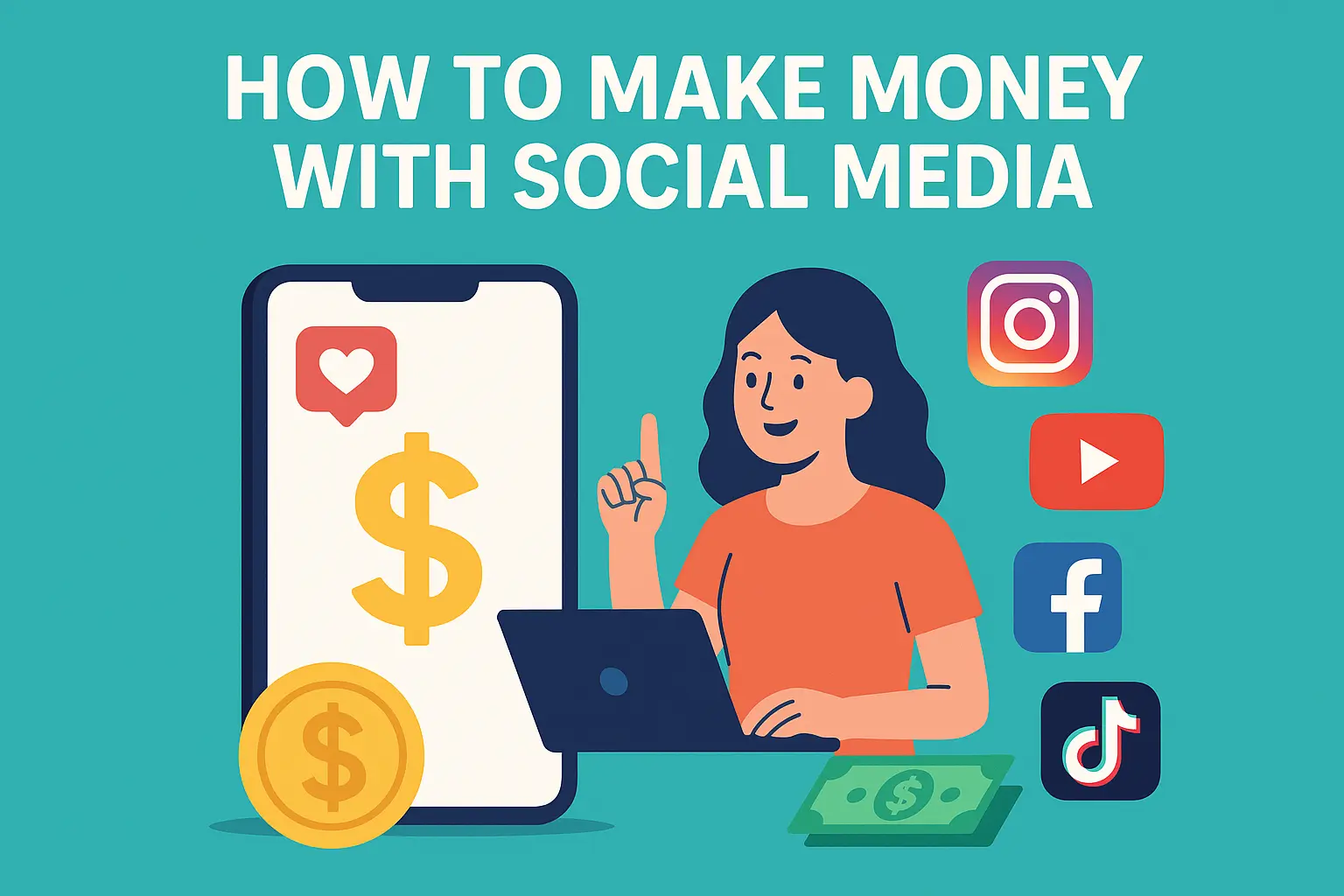In the last decade, social media has evolved dramatically. From text-based updates to photo sharing, then to live streaming, each stage has shaped how users engage with platforms and brands. But in 2025, one trend continues to stand above the rest: short-form video content. Platforms like TikTok, Instagram Reels, YouTube Shorts, and Facebook Reels have turned vertical, bite-sized videos into the most powerful tool for attention, communication, and marketing.
This blog explores why short-form video dominates social media in 2025, how it affects users, creators, and businesses, and what the future looks like for this unstoppable trend.
The Rise of Short-Form Video
Short-form video didn’t appear overnight. The trend began with the success of Vine back in 2013, which popularized looping six-second videos. While Vine eventually shut down, its cultural impact never disappeared. When TikTok exploded in popularity in the late 2010s, it proved that audiences crave fast, entertaining, and snackable content.
By 2020, TikTok had already reshaped how people consume content, and competitors quickly followed. Instagram launched Reels, YouTube rolled out Shorts, and Facebook adapted its feed to highlight vertical video. By 2025, nearly 80% of all social media consumption involves short-form video, making it the single most dominant content format online.
Why Short-Form Videos Work So Well
Several reasons explain why short-form video is so effective in 2025:
- Attention Span – Audiences have less patience for long videos. Quick, engaging clips deliver instant entertainment or information.
- Mobile-First – Most users access social media via smartphones, and vertical video fits perfectly into the way people hold their devices.
- Algorithm Boost – Social platforms heavily promote short-form video because it keeps users engaged longer, leading to endless scrolling sessions.
- Creativity and Accessibility – Anyone can make a short video with just a phone. Editing tools, filters, and music libraries make content creation simple.
- Global Appeal – Short videos break language barriers with visuals, sounds, and memes, making them universally shareable.
Impact on Social Media Platforms
TikTok
In 2025, TikTok remains the leader in short-form video. Its For You Page (FYP) continues to push highly personalized content, making it addictive and relevant for every user. TikTok has expanded beyond dance trends and memes to become a hub for education, product discovery, lifestyle tips, and even news updates.
Instagram Reels
Instagram has leaned heavily into Reels, with Meta reporting that Reels now account for over 40% of total user time on the platform. Many influencers and businesses use Reels to maintain visibility since the algorithm prioritizes them over static posts.
YouTube Shorts
YouTube, once known mainly for long-form videos, has successfully merged short-form content through Shorts. Creators can now attract audiences with Shorts and then direct them to longer videos, giving them more flexibility.
Facebook Reels
Facebook, while not as trendy among Gen Z, has found short-form video effective for older audiences. Reels allow small businesses and creators to reach a broad demographic, particularly in emerging markets.
Effects on Influencers and Content Creators
Influencers in 2025 cannot ignore short-form video. Brands now prefer collaborations through Reels, TikToks, or Shorts because they generate higher engagement rates than static posts or long videos.
Creators who adapt to this format enjoy:
- Faster growth – Viral potential is higher with short clips.
- Monetization opportunities – Platforms now offer ad revenue shares, brand deals, and creator funds specifically for short-form content.
- Cross-platform exposure – A single short video can be shared on TikTok, Instagram, and YouTube simultaneously, multiplying reach.
Short-Form Video in Digital Marketing
For businesses and marketers, short-form video is no longer optional—it’s essential. Here’s how companies are using it in 2025:
- Product Launches: Brands release teaser videos and tutorials in short clips to generate hype.
- Advertising: Paid ads in short-form format outperform static image ads by more than 3x.
- Customer Engagement: Behind-the-scenes videos, user-generated content, and challenges foster stronger community connections.
- Storytelling: Even in 30 seconds, businesses can convey powerful stories with music, captions, and visuals.
For example, a clothing brand can showcase a “7-second outfit transformation,” while a food company might post “15-second recipe hacks.” These small clips create memorable impressions that drive purchases.
User Behavior and Trends in 2025
Users today expect entertainment mixed with value. The most popular short-form videos include:
- Educational content (quick tutorials, “Did you know?” facts)
- Comedy and memes (relatable skits, funny edits)
- Lifestyle and vlogs (day-in-the-life, routines, travel snippets)
- Product reviews (authentic reactions to purchases)
- Challenges and trends (viral songs, dances, or filters)
Importantly, captions and accessibility features like auto-subtitles have become standard, ensuring that videos reach wider audiences, including those watching without sound.
The Role of AI in Short-Form Video
By 2025, AI tools have revolutionized how short-form videos are made. AI-powered apps can:
- Automatically edit raw clips into engaging short videos.
- Suggest trending music, hashtags, and captions.
- Generate realistic avatars or voiceovers for creators.
- Analyze performance data and recommend improvements.
This has made content creation faster, cheaper, and more effective, lowering barriers for beginners while giving professionals smarter tools to scale.
Challenges of Short-Form Video
Despite its success, short-form video also faces challenges:
- Oversaturation – Millions of videos are uploaded daily, making it harder to stand out.
- Content Burnout – Creators often struggle to keep up with trends and constant posting.
- Misinformation – Quick, viral videos can spread false or misleading information rapidly.
- Monetization Limits – While views are high, creators sometimes earn less compared to long-form videos.
Platforms are now working on balancing monetization models, improving content moderation, and reducing algorithm fatigue to sustain growth.
Future of Short-Form Video Beyond 2025
Looking ahead, short-form video will continue to evolve, but it is unlikely to disappear anytime soon. Instead, experts predict:
- Integration with AR and VR: Users may soon create and watch immersive short videos using augmented reality filters and virtual environments.
- Shoppable Videos: E-commerce features will allow users to buy products directly while watching.
- Personalized AI Feeds: Algorithms will become even smarter, delivering hyper-personalized video recommendations.
- Hybrid Content: Creators will combine short and long videos strategically to capture attention and build loyalty.
In short, short-form video is not just a trend—it’s the future foundation of social media engagement.
Conclusion
In 2025, short-form video dominates social media for a simple reason: it’s the perfect match for today’s digital lifestyle. It delivers entertainment, education, and connection in seconds, fits seamlessly into mobile-first platforms, and empowers both creators and brands to reach massive audiences.
From TikTok dances to Instagram product reels, from YouTube Shorts tutorials to Facebook Reels family moments, short-form video has transformed not just how we consume content—but how we live online.
As technology advances with AI, AR, and commerce integration, short-form video will only grow more powerful. For users, it’s endless entertainment. For creators, it’s endless opportunity. And for businesses, it’s the future of digital marketing.

















Leave a comment